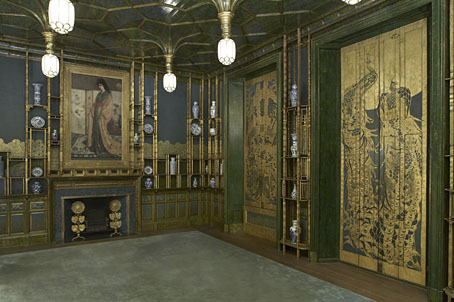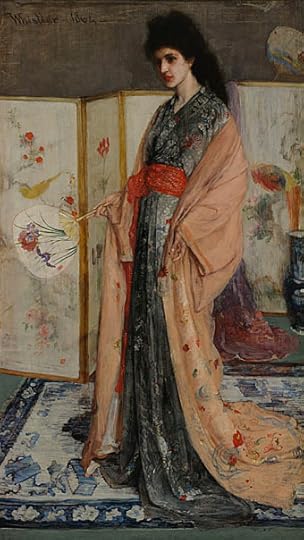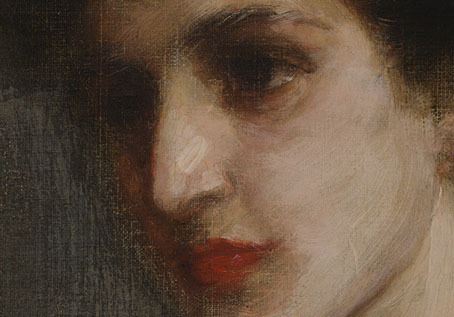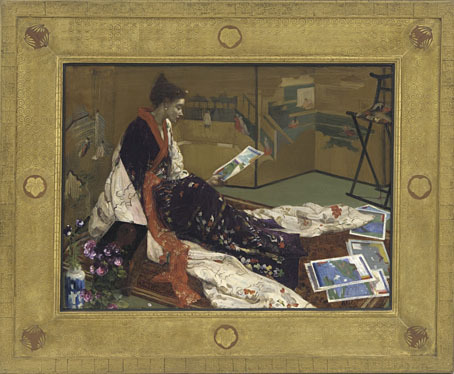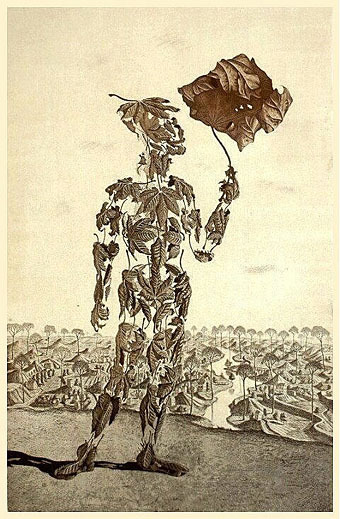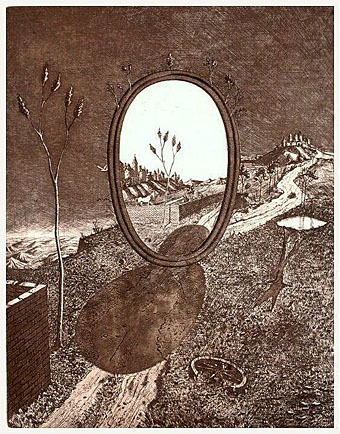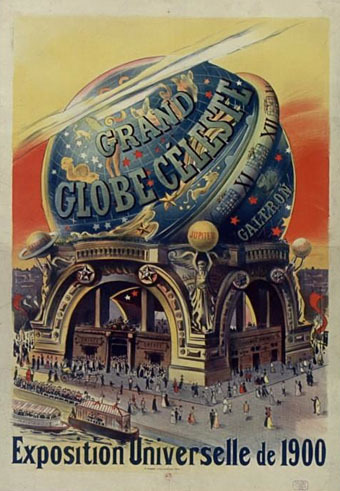John Coulthart's Blog, page 300
August 23, 2011
Bruno Taut's Glass Pavilion

Some speculative architecture that for once isn't from Paris in 1900. Bruno Taut (1880–1938) gets labelled an Expressionist architect although it's always a hazardous business connecting people in other disciplines to whatever art movement may be around at the time. The Glass Pavilion was a showcase structure commissioned by the German glass industry for the 1914 Werkbund exhibition in Cologne. The colour photo is a model from this V&A page where we learn that:
Bruno Taut's structure demonstrated the various ways glass could be used in a building, but also indicated how the material might be used to orchestrate human emotions and assist in the construction of a spiritual utopia. Taut's interest in this aspect of glass (explored more intensively during the First World War and later in his book Alpine Architecture and in the Glass Chain letters) had been stimulated by the writer Paul Scheerbart whom he had met in 1912 and who argued for an earthly paradise based on a new architecture of glass and colour. Subsequently, Scheerbart wrote Glasarchitektur (Glass Architecture) in 1914, which he dedicated to Taut, while Taut produced his Glass Pavilion and inscribed aphorisms from Scheerbart on the lintels of the 14 side walls. [...] The glazed walls were topped by a dome of reinforced concrete ribs and a double skin of glass: reflecting glass on the outside and coloured prisms inside. In the interior, the colour effects produced by sunlight were enhanced by the reflections of the pool and water cascade on the lower level, visible through a circular opening in the floor. Two flights of glass steps enclosed with glass walls produced the sensation of descending to the lower level 'as if through sparkling water'. The cascade was made of yellow glass, while the pool was of its complementary colour, violet. A mechanical kaleidoscope overhead projected images, an early version of a light show, intensifying the overall impression on the visitor.
All of which makes one wish there were more colour photos available. There's another photo of the model here which shows a very different arrangement of light and colour.

Le Corbusier apparently disliked Taut's obsession with vivid colours, accusing him of being colour blind. There's more about Taut's philosophy of colour here. Taut wasn't the only architect at the time interested in glass, his contemporary Hermann Finsterlin designed a "dream in glass" in 1920 that still looks radical today, as do many of Finsterlin's other designs, all of them a good reminder that biomorphic architecture isn't exactly new, it's just become easier to build.
See also: Lebbeus Woods on Taut's plan to refashion the Alps into a range of crystalline buildings.

The cascade.

The dome interior.
August 22, 2011
Six Suites of Engravings

Something discovered following another delve through the collections of etchings and engravings at the Internet Archive where a frustrated search for one subject turns up something else. This 1549 folio of architectural engravings is credited to architect and designer Jacques Androuet du Cerceau (1510–1584), and the plates are based on earlier renderings by Agostino Veneziano and Hieronymus Cock, he of the incredible map of the Americas. Among the details of columns and caryatids there's a series of the kind of imaginary perspective views I always like to see, lots of sparsely-populated courtyards in various states of ruin. It's easy to imagine these prospects being transformed into scenarios from Paul Delvaux or Giorgio de Chirico after a suitable change of lighting.



Elsewhere on { feuilleton }
• The etching and engraving archive
August 21, 2011
The Mysteries of Myra

Aleister Crowley in 1912.
Back in 1999 I found myself making notes for a short essay on the subtle and often tenuous presence of Aleister Crowley in cinema. Despite Crowley's reputation in the early years of the 20th century—famously labelled by tabloid hyperbole as "The Wickedest Man in the World"—he doesn't seem to have ever been filmed. He does have a succession of cinematic avatars, however, in a variety of thrillers and horror films, usually manifesting in the guise of a fictional magus whose exploits will be based on the more lurid public perceptions of the Crowley persona.

After some research my short essay bloomed into a longer essay then began developing into a book-length project which I had the good sense to abandon. The idea still interests me but I didn't have the time or resources to devote to all the detailed research such a project would require if it was going to be done thoroughly. It was also difficult at that time to see the some of the more obscure films, a crucial early example being Rex Ingrams' 1926 adaptation of The Magician, Somerset Maugham's first novel whose central character, Oliver Haddo, is based on Crowley. The Magician has now been restored and reissued but at that time it was out of circulation entirely.
A Portuguese magazine ad.
It's also the case that there always seems to be more to find on this subject, a prime example being The Mysteries of Myra, a lost serial directed by Leopold & Theodore Wharton which has only now come to my attention. If the title seems vaguely familiar it's because the screenwriter was one Charles W Goddard whose earlier The Perils of Pauline survives as a touchstone for silent melodrama if nothing else. The Mysteries of Myra dates from 1916, and is distinguished by being one of a number of films which received effects advice (and publicity, of course) from Harry Houdini. The Pulp Reader has a précis which includes this toothsome blurb:
BEWARE THE BLACK ORDER! So comes the warning from the spirit of Myra Maynard's father, who reaches out to her from beyond the grave to warn her of danger from the masters of the occult arts that lurk in the shadows and mark her for murder on her eighteenth birthday. Only the world's first psychic detective, Dr. Payson Alden, and his friend Haji the Brahman mystic, can save clairvoyant Myra from the terrors of The Grand Master of the Order, who tries to claim not only her fortune but her life by means of suicide-inducing spells, invasion of her chamber by spirit assassins, and even reanimation of the dead by a fire elemental.
A list of the episode titles reads like a track list for a metal album or a collection of Algernon Blackwood stories: 'The Dagger of Dreams', 'The Poisoned Flower', 'The Mystic Mirrors', 'The Wheel of Spirit', 'The Fumes of Fear', 'The Hypnotic Clue', 'The Mystery Mind', 'The Nether World', 'Invisible Destroyer', 'Levitation', 'The Fire-Elemental', 'Elixir of Youth', 'Witchcraft', 'Suspended Animation', 'The Thought Monster'. The Black Order menacing the imperilled Myra (there's always an imperilled woman in these things) is almost certainly based on Crowley and his acolytes. John Symonds' biography The Great Beast contains an account of Crowley's rituals published for appalled American readers in The World Magazine in 1914. That article, and the famous 1912 photo of The Master Therion gesturing in his ceremonial robes, was all the filmmakers would have required to create their villainous cabal.

The Black Order at work.
The trouble with this kind of drama is that the description is often a lot more stimulating than the stodgy reality so it may be for the best if Myra's exploits have perished. Anyone eager to know more should avail themselves of the photonovel put together by the Serial Squadron using stills (some of which may be viewed here) and a novelisation of the serial story. The book is reviewed at Lovecraft is Missing. Unless anyone knows better, I'd say Aleister Crowley's curious film career began with Myra's mysteries.
Previously on { feuilleton }
• The Mask of Fu Manchu
• Aleister Crowley on vinyl
August 20, 2011
Weekend links

If Jean Cocteau had made a horror film it might have resembled George Franju's dreamy and disturbing body-horror masterwork Les Yeux Sans Visage (1960). I've not been able to trace the artist for this poster but it's a good example of the diluted Surrealism which was still prevalent in poster graphics at this time.
If I were asked what's needed today, I'd say innovation, and greater timbral variety. If you truly want the audience to experience the clammy thrill of the grotesque, the uncanny and the fearful, you have to reach for the unfamilar, the perplexing, even the ugly; there's an infinite Lovecraftian sound-world out there waiting to be explored. We need new combinations, new textures in film scoring. Horror has a licence to be weird – it's supposed to mess with our heads. (more)
Stephen Thrower.
Stephen Thrower is an ex-member of Coil, a current member of Cyclobe, was the editor of a great magazine, Eyeball, devoted to horror cinema and what Kim Newman (casting about for a wider, non-generic label) calls "nightmare movies", and is the author of Nightmare USA and Beyond Terror: The Films of Lucio Fulci. In other words, he's more than qualified to write about horror film soundtracks. The reason is an event at the South Bank Centre, London, two weeks from now, Sound of Fear: The Musical Universe of Horror, one of the highlights of which will be a performance by John Carpenter's soundtrack collaborator Alan Howarth. Related: my post about Italian horror soundtracks from 2008.
Art by Justin Lovato.
• Mind Over Matter: Alan Fletcher's The Art of Looking Sideways. "The Art of Looking Sideways captures the sensory overload of contemporary visual culture, while also acting as a primer in visual intelligence." Related: Alan Fletcher profiled at the Design Museum.
• More music and more psychedelia: Past Present Future Space-Time "Wysing Arts Centre explores the legacy of psychedelia in this year's annual music event".
• The Coilhouse International Silent Auction is GO and ends Sunday night if you want to bid for some rare and special things.
• The Garden of Kama and Other Love Lyrics from India (1901), illustrated by John Byam Shaw.
• Chris Marker's take on the recent London riots: Overnight.
• Bristol's graffiti artists are redecorating the city's streets.
• Women and knives: a Dario Argento poster gallery.
• Inferno (1993) by Miranda Sex Garden, from their album Suspiria.
August 19, 2011
Whistler's Peacock Room revisited
The Peacock Room (1876–1877).
More Japonism courtesy of the Google Art Project where it's possible to pan around this view of Whistler's Peacock Room at the Freer Gallery of Art. There's only one view, unfortunately, it would have been good to see the reverse angle or, better still, a full panorama.
The Princess from the Land of Porcelain (1864).
Google has a number of the Freer's collection of Whistler drawings and paintings, including The Princess from the Land of Porcelain, the painting which the Peacock Room was designed to show to best effect along with patron Frederick Leyland's blue-and-white china. Once again the Google views allow us to scrutinise the details of a painting in a way which would otherwise be impossible. It's fascinating for me to see how loose Whistler's technique was even at this early date, the brushstrokes of the face seem to have been scumbled over raw canvas.
Caprice in Purple and Gold: The Golden Screen (1864).
Also at the Freer is another piece of exotica from the same period with a suitably Japanese frame. Whistler's Japonism, and the Peacock Room in particular, leads directly to Aubrey Beardsley's art thirty years later.
Previously on { feuilleton }
• The Peacock Clock
• Whistler's Peacock Room
August 18, 2011
Kay Nielsen's East of the Sun and West of the Moon
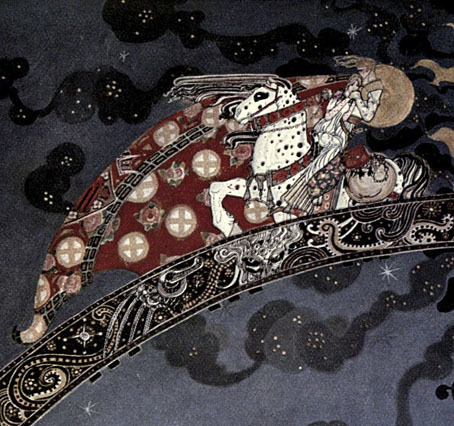
Kay Nielsen's meticulous approach to illustration is shown to great effect in the colour plates for this 1914 collection of fairy tales subtitled Old Tales from the North. The theme might be northern but Nielsen (who was Danish) maintains his beautifully hybrid style with its hints of Japonism and Persian miniatures. The whole book can be viewed or downloaded in a variety of formats here.
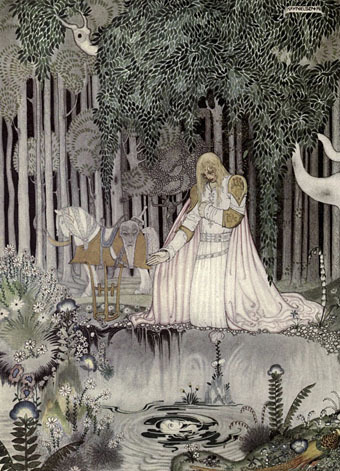
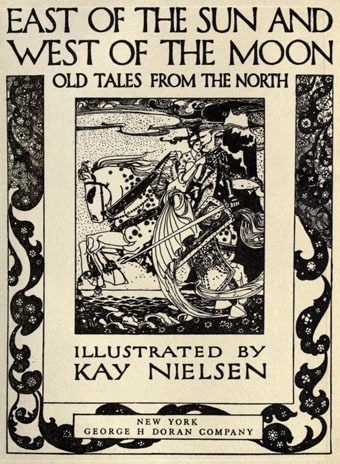
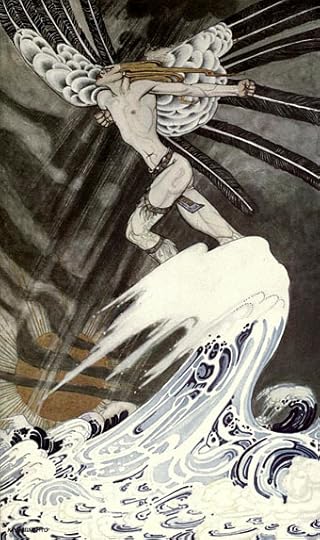
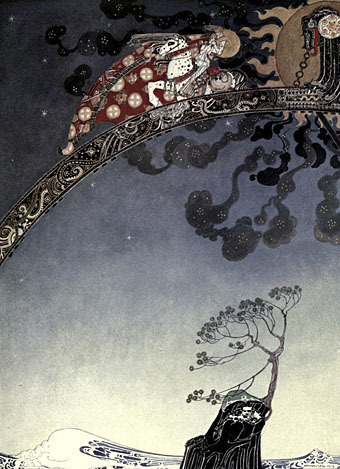
Elsewhere on { feuilleton }
• The illustrators archive
August 17, 2011
Hapshash Takes a Trip
UFO Coming (1967) by Hapshash and the Coloured Coat.
It's always difficult to choose a favourite from the posters that Nigel Waymouth and the late Michael English produced under the name Hapshash and the Coloured Coat, their standards remained high (so to speak) throughout their partnership. But I always liked the ejaculating penis butterfly on this early design for Joe Boyd's UFO club, a detail which would have given Aubrey Beardsley a chuckle and which is probably unique in art. The gorgeous Hapshash posters receive another airing next month in an exhibition at the Idea Generation Gallery, London, entitled Hapshash Takes a Trip: The Sixties Work of Nigel Waymouth:
Waymouth's own archive plays a major part in the retrospective. Kept privately for decades and rarely seen since their first creation in the late '60s, the artist's personal collection features works made as part of Hapshash and his designs for Granny Takes a Trip. Furthermore it contains his own album covers, photographs, press clippings and magazines. This extraordinary collection unites rare works with rare moments, through photographs never before seen in public.
The exhibition opens on September 9th. There's more detail on the press release (PDF) including a promise that "Huge silk-screened reproductions of their iconic posters will fill the entirety of one of the Gallery's soaring 20 foot walls."
The exhibition title alludes to the celebrated King's Road boutique Granny Takes A Trip whose series of striking shopfronts were decorated by Waymouth before and during his partnership with Michael English. The Look posted some pictures of Waymouth's 1947 Dodge decor earlier this week.
Previously on { feuilleton }
• The Dukes declare it's 25 O'Clock!
• Psychedelic Wonderland: the 2010 calendar
• Michael English, 1941–2009
• Max (The Birdman) Ernst
• The Look presents Nigel Waymouth
• The New Love Poetry
August 16, 2011
The art of Jindrich Pilecek, 1944–2002
Knight of Autumn (1971).
A pair of intaglio prints by a Czech illustrator and ex libris artist whose work helped sustain that strand of Surrealism which has never quite expired in Eastern Europe. These are from a larger selection of prints found here, and the tip comes via the ~Wunderkammer~.
Mirrors II (1986).
Elsewhere on { feuilleton }
• The etching and engraving archive
August 15, 2011
Wildeana #6
"The rich making merry in their beautiful houses, while the beggars were sitting at the gates." Above and below: illustrations by Charles Robinson from The Happy Prince and Other Tales, an edition from 1920.
Continuing an occasional series. I've yet to see a copy of the recent annotated and unexpurgated edition of The Picture of Dorian Gray but Alex Ross wrote a marvellous essay for the New Yorker about the novel, its creation, its public reception, and Wilde's decision to tone down the overt homoeroticism of its earlier drafts. This is one of the best pieces I've seen for a while about Wilde, replete with choice detail:
The gay strain in Wilde's work is part of a larger war on convention. In the 1889 story "The Portrait of Mr. W. H.," a pseudo-scholarly, metafictional investigation of Shakespeare's sonnets to a boy, Wilde slyly suggests that the pillar of British literature was something other than an ordinary family man. In the 1891 play "Salomé," Wilde expands a Biblical anecdote into a sumptuous panorama of decadence. Anarchists of the fin de siècle, especially in Germany, considered Wilde one of their own: Gustav Landauer hailed Wilde as the English Nietzsche. Thomas Mann expanded on the analogy, observing that various lines of Wilde might have come from Nietzsche ("There is no reality in things apart from their experiences") and that various lines of Nietzsche might have come from Wilde ("We are basically inclined to maintain that the falsest judgments are the most indispensable to us"). Nietzsche and Wilde were, in Mann's view, "rebels in the name of beauty."
As for the novel, I'm feeling rather Dorian Grayed-out at the moment, having recently completed ten illustrations based on the story for a forthcoming anthology. More about that later.
Elsewhere, the William Andrews Clarke Memorial Library in Los Angeles has been running an exhibition, Oscar Wilde & the Visual Art(ists) of the Fin-de-Siecle, since July, and will continue to do so until the end of September. No word about what's on display but this page on their website has details of their collection of Wilde materials which they say is the most comprehensive in the world.
Finally, the majority of visits to these pages in recent days have come from this post about Ivan Albright's astonishing Dorian Gray painting in the Art Institute of Chicago. The post links to an earlier one of mine about the paintings used in Albert Lewin's 1945 film of the book.
Elsewhere on { feuilleton }
• The Oscar Wilde archive
August 14, 2011
Le Grand Globe Céleste, 1900
I'm sure I'll run out of things to say on this subject eventually but it's showing no sign of happening yet. In an exposition with its fair share of unusual buildings, the Grand Globe Céleste in the Paris Exposition Universelle of 1900 was one of the more notable constructions. An enormous globe built on the banks of the Seine close to the Champs de Mars, the Grand Globe Céleste was some 50 meters in diameter with its attractions including a restaurant and an exhibition space in the interior showing planetary orbits and maps of the stars. Enormous globes became a common feature of later world's fairs which makes me wonder whether this example was the first of its kind. A far larger structure was proposed for the 1893 exposition in Chicago but never built.
The poster here is from the archives at Gallica. Searching around for other images turned up a wiki I hadn't come across before devoted to the Exposition Universelle. The page there for the Grand Globe has a picture of one of the exposition's tragedies caused when a footbridge leading to the attraction collapsed, killing five people. (The intact footbridge can be seen on this view facing towards the river.)
Previously on { feuilleton }
• Tony Grubhofer's Exposition Universelle sketches
• The Cambodian Pavilion, Paris, 1900
• Le Manoir a l'Envers
• Suchard at the Exposition Universelle
• Esquisses Décoratives by René Binet
• Le Palais de l'Optique, 1900
• Exposition Universelle films
• Exposition jewellery
• Exposition Universelle catalogue
• Exposition Universelle publications
• Exposition cornucopia
• Return to the Exposition Universelle
• The Palais Lumineux
• Louis Bonnier's exposition dreams
• Exposition Universelle, 1900
John Coulthart's Blog
- John Coulthart's profile
- 31 followers




